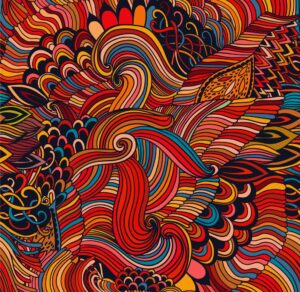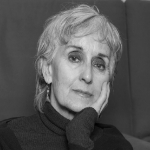TRANSLATED FROM THE ITALIAN BY BRENDA PORSTER
Convinced as I am that we achieve complexity by basing ourselves on our own personal experience, in considering this theme I’ve tried to start with what has happened to me in the practice of these two modes of expression – photography and writing poetry. That is to say – immodestly – like Roland Barthes in his masterful reflections on photography, by making a heuristic principle of “the ancient supremacy of the I (Nietzsche).” (1).
What is the source of this dual fascination, what have they set in motion in me, and what seems to me to be shared by these two modes of expression which have “happened” to and accompanied me over time?
To start with both of them clearly present us with a thought and a transfiguring possibility: just as in photography there are elements of reality that seem to be recognizable (the “referent” adheres to the image, though certainly without exhausting its potentiality), so also in poetic writing words refer to a precise meaning, while also going beyond. In both cases, there is a thought that is compressed, concise, dense, a thought accomplished through images in one case and, as I’d put it, through verbal images in the other. Both a photo and a poem want to actualize a perception, to save the memory of an instant, a fragment of experience of the world: a presence in absence, the photo inside a frame, the poem on the space of a page.
Of course, though, the poem also possesses an orality that can make it seem closer to music than to image. Because while a photo cultivates and is nourished above all by silence, a poem implies a body and a voice. It can be spoken but is also “seen”, and so the pauses, the white spaces, the way words are placed within the margins of the page also matter, and give it form. The white, then, the empty spaces, are like silence in music. And it is through this giving of form to the written word, this relationship with the signs that comprise it and its layout on the page, that the image creates a visual connection with orality – one that is at least as important as the poem’s relationship with silence.
The calligrams and visual poetry of artistic avant gardes have explored these avenues in a variety of ways. And, indeed, we find numerous testimonies of the closeness felt between photographers and poets, and of attempts at exchange and collaboration between the verbal and the iconic registers.
What is more: the “you” (explicit or implicit) with which every poem invokes us seems to me the verbal equivalent of the idea of the “gaze”– the way photographers stand before the object they observe and by which they are in turn observed, in an interchange between subject and object. This gaze is then multiplied and recreated in a chain of gazes of those who look at a photo, as it is in those who read a poem: “An ancient aqueduct of gazes”, to quote a verse by Valerio Magrelli, which is, of course, initially evoked by the visual suggestion of the ocular orbits but also by the flow and reproduction of the re-creative gaze of those who read what the poet has written or see what the photographer has seen and has shown us in a photograph that sees and calls on us in turn.
But it was the encounter with the electrifying writings of the poet, prose writer and translator Yves Bonnefoy about the idea of “presence” as the founding instant of poetry that provided me with authoritative confirmation and solid foundation for what I already felt and intuited.
According to Bonnefoy (who wrote frequently on the themes of the image and photography), it is in the experience of “presence”, of what he calls the surprising instant of presence, that poetry has its origin. The experience of “presence”, says Bonnefoy, is had when “something, or someone, is there, in front of us, and we suddenly discern what I might call ‘a presence’, by which I mean a density of being, an intensity in the way it manifests itself, that overwhelms with absolute and irrefutable evidence our probable desire to reduce these things or persons to an idea of what they are” (here by idea Bonnefoy means the parcellizing conceptualization of analytic thought).
According to Bonnefoy, this experience of “presence” can happen to everyone, and often happens in childhood. It is a founding experience, but it also troubles and wounds, because it subverts the relationship between what children are learning – that is, the language of concepts – and their experience. For “the language of things that can be reified and monetized” entails an impoverishment of the gaze, and it is not adequate to their experience.
And this calls to mind the verses of Wislawa Szymborska on the role of chance and of the fertile age of childhood when in the poem “Love at First Sight” she says “maybe … the ball that vanished into childhood’s thicket” was the cause of the past meeting we are unaware of, which is the poem’s theme and which could be the meeting with poetry itself.
Bonnefoy goes on to say, “In the instant of presence, in that surprising instant (…) all of reality appears under another light, because it is then that we realize how even the smallest thing has infinite aspects, and above all that these aspects are all found together, enfolded, and they attract the gaze before thought (…) the thing is right there, before our eyes, in its ‘hereness’ and ‘nowness’: nothing can take its place, it is the character of the absolute … we feel that we are part of the body of the world, that we exist as much as and in it.”
To this “density” of the “being there” of places and things corresponds an intensification of our perception and our being. And this is an experience, a feeling, well known to photographers (or at least to certain photographers), when they begin to listen to the world and to themselves through what they are called on to photograph, and their gaze is no longer controlled by concepts and meanings. And being slower, only after this can verbal expression catch up with visual thought.
For Bonnefoy, this experience of ‘presence’ is “a place of the spirit from which many roads depart”. One of these is poetry, with its torsion of the language of meaning; another is photography, with its speaking silence.
“Poetry is not so much a text as it is matter emanating its light”, writes Bonnefoy. And this is what photographs can do as well. Even if – he warns us – photography is dangerous. The infinite multiplication of photographs that capture only the outside of life can contribute to end the world. But some photographers, and in this lies their greatness, are trying to save it”.
And so, we have poetry and photography as testimonies of presence, memories of the apparition of an intensity we wish to hold on to, to make it present still. So that it will “happen” again, through the words and images that give off its splendour. Time and memory are their material and their nature is dual, linking presence and absence, past time and present time, the fragment and the whole, the contingent and the absolute.
Both are guardians of “presence”, against the loss of meaning in the world.
1) Roland Barthes, La camera chiara, Italian translation, Turin, 1980
2) Yves Bonnefoy, La traduction de la poésie, in Semicerchio, XXX-XXXI, Florence, 2004 (trans. by Michela Landi); all quotations from Bonnefoy are taken from this article.
Also, read Sheep by Dr Indira Dangi translated from the Hindi by Rituparna Mukherjee, and published in The Antonym:
Follow The Antonym’s Facebook page and Instagram account for more content and exciting updates.




























0 Comments